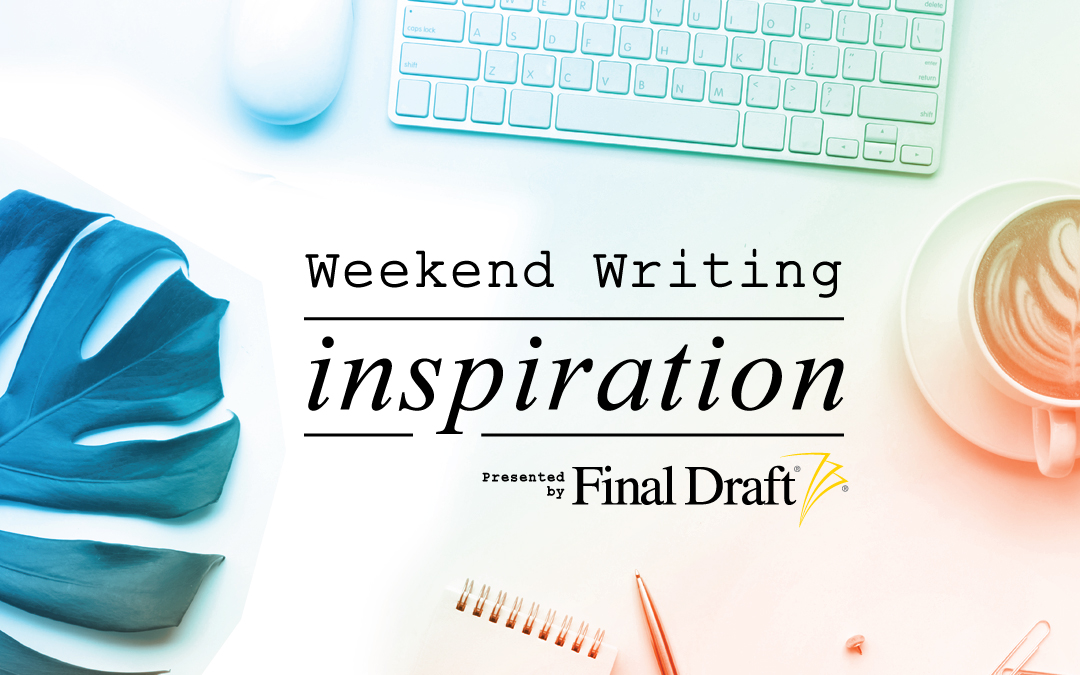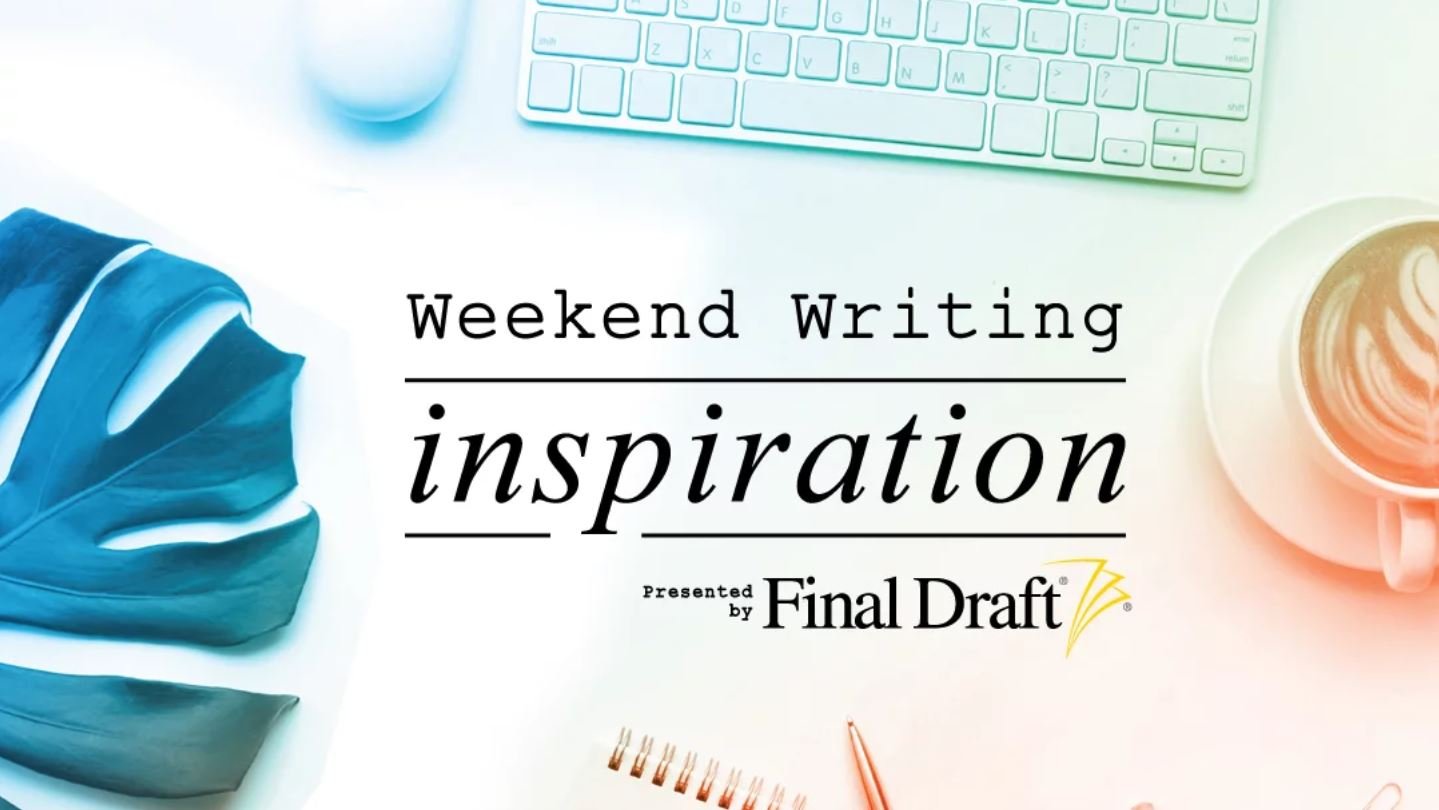Weekend Writing Inspiration: 7 Steps on How to Develop a Plot
March 13, 2020
What should you do when your writing strengths lie with character but not with structure? When your dialogue sparkles and your characters walk off the page but you struggle with plot points and story structure, it’s hard to know what to do to right the ship.
My approach in working with character-focused writers is to help them see the vibrant connection between character and plot so it becomes a more instinctive writing process.
You might recognize one of these “symptoms” of your characters shining but your plot falling flat:
- You struggle to figure out where the story “should” go.
- You read about structure and plot points but they feel like meaningless terms you can’t get your head around.
- Readers say your plot feels convoluted, forced or contrived.
- Readers tell you the story feels aimless or like a disconnected series of events.
- You can fully visualize compelling scenes and situations for your characters to interact in but you’re not sure what the big picture story is really about.
- Your story lacks a satisfying climax and resolution even though your characters are deep and compelling.
- You’re writing about a character situation but there’s not a true story there. In other words, your characters don’t change.
- When you try to “develop” plot points they feel forced or formulaic.
Here are seven steps to help strengthen your plotting work so your characters have the chance they deserve to make it to the silver screen:
-
Make a distinction between character and plot
What is character? What is plot?
The structure of a script can be thought of as the collection of acts and plot points creating the container for a story with a beginning, middle and end. But how do you decide what happens at each of those key points?
I value screenwriting master teacher Corey Mandell’s distinction between character and structure. In his screenwriting workshops, he describes it as the difference between “wine” (character and dialogue) and a “wine glass” (structure).
What’s useful about this is that we can easily see how one without the other doesn’t work well. Wine in a paper cup (or on the floor) isn’t nearly as enjoyable as wine served in a proper glass. And an empty wine glass? Or a beautiful wine glass with plain water in it? Again, not as satisfying.
And that’s an ultimate goal of storytelling and screenwriting: Write and deliver audience-satisfying, well-crafted stories. So instead of thinking of your skill set as an either/or when it comes to character and plot, think of it as a both/and.
-
Accept plot and structure as skills to master
When you take a both/and approach to character and plot, it means accepting that as someone with already excellent character skills, you’ll still want to work to develop your plot and structural skills.
In order to make the most of your screenwriting career, study what makes plot work. Don’t write it off as something you’re not good at; instead tackle it head-on. With screenplays, it’s essential.
-
Think of plot as a story design tool
One of the most useful distinctions I’ve learned when it comes to story and plot came from my developmental editing mentor, Sophie Playle. She taught us to see story as a sequence of connected events with a beginning, middle and end.
Plot is similar, but with a twist: It’s a sequence of connected events presented in an order that maximizes dramatic effect. Your plot is a carefully designed story tool that helps you present what happens in the most effective means possible.
-
Use your protagonist’s journey to develop your plot
You can be just as creative with plot and structure as you are with your characters. The key element to focus on is the journey your character takes. What are the steps along the way your character must experience in order to be changed?
For example, in working with a client recently, we looked at how we wanted her protagonist to change over the story, which in this case was from selfish to altruistic. And then we asked what kinds of experiences this character would need in order to find altruism within themselves after a history of being selfish. What transformation would be required?
Thinking of your character’s journey this way helps you bridge the gap between character and plot; once you know what key story moments are required, they guide you to your plot points.
-
Innovate around standard plot points
Now you can more clearly develop the storyline for your script. At this point, standard plot points become much more useful. Whether you’re using the hero’s journey, save the cat or another structural method, when you know what your character needs to experience, those plot points shift from being abstractions you have to force on your script to a way to design your key story moments.
Focus on understanding plot points at an intuitive level by connecting them to your character’s journey. What would your character have to experience to push them into taking new action or to wanting something new? (That’s their inciting incident.) What circumstance or situation forces them to make a choice where there’s no turning back from the journey? (That’s their “end of the beginning” or “point of no return.”)
Once you start to see the relationship more clearly between character and plot, then you have something you can innovate with and use to drive your plot.
Your character’s actions; decisions, feelings, choices, needs, and wants — along with the character growth moments you as the writer know they must experience — will all move the story forward, each plot point tying inward character shifts to the ultimate outcome for your protagonist.
-
Rely on theme and narrative questions
Another storytelling element to consider is turning to your narrative and thematic questions to guide your plot development.
Your narrative question is the question that hooks your audience at the beginning of the story and keeps them engaged through the end and is about the literal story on the page or screen. (For example, “Will Harry and Sally get together or not?” or, “Who was killed that night at the elementary school party?”)
Then for each standard plot point you can ask yourself, “How is this moment responding to the narrative question I asked at the beginning of this story? How can it relate to the final answer?”
Your thematic question, on the other hand, is about the deeper layers in your story (more about theme here). For each plot point ask yourself, “How could my theme show up here? How might it inform my plotting decisions?”
-
Consider teaming up with another writer
A last possibility is to consider teaming up with another writer or working with a story coach to help develop your plot. Screenwriting is a naturally collaborative effort. You don’t have to do this alone.
But I bet you can.
***
Your weekend writer’s assignment
If you feel like you tend to lose your way with plot, study your character’s journey. What’s the series of experiences your character must have in order to grow into the new person they’ll become by the end of the story? How could those moments inform your plot? How might they correspond to the standard playbook of plot points? This is where you get to innovate and be creative. Have fun!
Read More: What is a Subplot?
Written by: Jenna Avery
Jenna Avery is a screenwriter who specializes in sci-fi action and space fantasy, and her most recent project is a post-apocalyptic coming-of-age story for a Canadian producer-director. Jenna is also a writing coach and the founder of Called to Write, where she has helped hundreds of writers overcome procrastination, perfectionism, and resistance so they can get their writing onto the page and into the world where it belongs. Jenna writes about writing and fulfilling your creative calling at calledtowrite.com, writes for ScriptMag and Final Draft, and teaches at Script University. Download Jenna’s free guidebooks for writers, including “How to Choose Your Next Book (or Script!)” when you join her mailing list at https://www.calledtowrite.com/mailing-list- Topics:
- Discussing TV & Film




